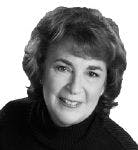‘Huge Sellers’ Herald Changes in Japan Drug Pricing
Pharmaceutical Executive
The latest price rules revision is both radical and rare by the government’s usual exhaustive standards. What do the new rules mean for pharma players in the world’s third-largest market?
The revision of pricing rules that occurs every two years in Japan, with a new list of reimbursement prices simultaneously appearing, is not normally something to get too excited about. In the Japanese manner, change is characterized by evolution not revolution, and then only after lengthy discussion and the development of a wide-spread consensus. April 2016’s revision, however, broke the mold (see Table 1 below). Not only was cost-effectiveness evidence demanded for the first time, but provision was made without prior warning to target those marketed drugs considered “huge sellers” (kyogaku) with price cuts of up to 50%. Further action is expected soon to tackle what is now dubbed “the expensive drug issue.” The very future of the National Health Insurance (NHI) scheme might even be jeopardized without this, some fear.

Japan is of course a major pharmaceutical market which cannot be ignored by any serious multinational company. Prescription drug turnover at NHI prices in calendar 2015 were JPY 10,958 billion ($104.6 billion), up 6.2% on the previous year in local currency terms, according to IMS Japan. Sales are fuelled by universal health insurance, fee-for-service provider remuneration, and a population that possesses an insatiable appetite for new technology and is also ageing.
NHI pricing principles
With very few exceptions, product listing in the NHI drug tariff is necessary to access the market. This gives the reimbursement price applicable in hospitals (41% of 2015 sales), community pharmacies (38%) and self-dispensing GP clinics alike (21%). Decisions are taken by an independent expert body, the Drug Pricing Organization (DPO), after a short negotiation process with the Ministry of Health, Labor and Welfare (MHLW), and are rubber-stamped by the top policy body, the Central Health Insurance Medical Council (Chuikyo).
A new drug normally receives the same price per day as that of a similar, already reimbursed product, with the possibility of additional price premiums for innovativeness, usefulness, paediatric use or small market size. Products lacking novelty get the lowest class price. If a suitable comparator does not exist, the price is arrived at by cost calculation. As the final step in the process, the initially calculated price may be subject to revision (upwards or downwards) by application of the foreign price adjustment rule.
Introductory NHI prices usually show later decline. There are three mechanisms for this:
- Price revision of the entire market on April 1 of alternate (even-numbered) years designed to squeeze the “drug price margin,’” or yakka-sa, and bring prices in the NHI tariff closer to lower actual market prices that have arisen due to discounting.
- Greatly expanded sales over the levels forecast are penalized by downwards repricing in lieu of and at the same time as a biennial revision.
- Additional price cuts are given to “long-listed” brands (i.e., off-patent originator products with marketed generics) with low levels of generic uptake.
The savings are used to fund concurrent increases in NHI medical and technical fees.
It is possible to have the impact of biennial revision or repricing mitigated by application of “correction premiums”:
- When a pediatric or orphan indication has been added.
- For products whose “true clinical usefulness” is shown through results published in a “globally-appreciated academic journal.’”
- With originator drugs NHI-listed for less than 15 years with no marketed generics and with a yakka-sa below the weighted average yakka-sa of all listed drugs.
This last-named premium comes conditional on the company, at MHLW request, progressing Japanese development or more new drugs/more new indications of drugs used off-label.
Repricing rule for ‘huge sellers’
The new rule is in two parts:
- Products with annual sales at NHI prices of JPY 100-150 billion within 10 years of listing that are at least 1.5-times the forecast level (maximum price reduction possible = 25%).
- Products with annual sales more than JPY 150 billion within 10 years of listing that are at least 1.3-times the forecast level (maximum price reduction possible = 50%).
It badly hit the NHI prices of six presentations of 2015’s top-four best-selling brands (see table 2 below).
The two hepatitis C virus brands remarkably had been available just a matter of months, with Sovaldi only the fourth new drug to be given the innovativeness premium at launch, the first since 2002, with its premium of 100% the highest ever awarded.

Cost-effectiveness requirements
2016 also saw the first mandatory cost-effectiveness demands. Guidelines were published the previous year. While cost per quality-adjusted life year methodology will be applied, no fixed incremental cost-effectiveness ratio (ICER) is used, so it is not clear how there will be a link to price. To add to the confusion, no HTA agency has been announced. Assessment of submitted data is likely to be initially performed for MHLW by academic reviewers under the supervision of Chuikyo special member Dr. Takashi Fukuda of the National Institute of Public Health. He also led the appraisal of the five drugs in the 2014 cost-effectiveness pilot, no details of which have been released. Japanese universities that specialize in health economics include Tokyo, Kyoto and Kobe.
Existing products
Seven marketed medicines (see Table 3 below) and five medical devices were selected for immediate economic evaluation by applying the following criteria:
- First added to the NHI tariff between April 2012 and April 2015.
- Priced by similar efficacy cost comparison with the highest awarded price premium.
- Priced by cost comparison with an added premium of at least 10% and having the highest projected peak sales.
- Priced by cost calculation with the highest awarded premium above the standard operating profit.
- Priced by cost calculation with an operating profit premium of at least 10% and having the highest projected peak sales.
- Drugs with similar pharmacological effects to those above.
Excluded were drugs for use in a rare disease that lacks adequate established treatment and drugs developed for Japan at MHLW request.

Their NHI prices will be potentially revised from April 2018. The new price will first be calculated according to the conventional price adjustment rules (market based and repricing if high sales) and then adjusted again based on the results of the cost utility analysis.
Whether proof of cost effectiveness might allow the two Gilead brands to recoup some of the losses to “huge seller” repricing is an interesting thought. This is unlikely. With Ministry of Finance encouragement, MHLW’s intention is to use the results merely as another cost-containment tool.
New products
NHI price applicants after October 1, 2016, are required to submit pharmacoeconomic data as part of their dossier when the new drug is to be priced either:
- By cost comparison with a price premium of at least 10% sought, and annual sales forecast to peak at more than JPY 50 billion.
- By cost calculation with a premium of at least 10% over the standard operating profit sought, and annual sales forecast to peak at more than JPY 10 billion.
The same exclusion criteria apply for existing products.
MHLW emphasizes its initial intention is just to test the process, with the results of economic evaluation not having any effect either on the launch price or on the time needed to obtain this.
Other measures
The main plus for research-based companies in the 2016 reform was a further two-year extension to the new drug development premium program, on trial since 2010, pending analysis of further data. Qualifying products received a price premium of 5.41%, as long as the result did not exceed the previous NHI price. The scheme has effectively prevented market-based price reductions with a number of key brands during their patent life.
Industry has consistently requested the premium be made permanent but is certain to be happy to see the pilot continue on a rolling two-year basis, with none of the expected restrictions imposed.
It was a controversial measure from the start, mainly because of a disconnect between companies awarded premiums and those requested to develop new drugs/new indications for Japan, and also because the main recipients of premiums were foreign-origin companies. Unlike other types, this premium is not permanent. At generic or biosimilar entry, or if 15 years have passed since launch, stored-up price cuts that would otherwise have been imposed are enacted in a single step.
One of the toughest measures to swallow is repricing of medicines other than the target ones merely because of alleged pharmacological similarity, regardless of their level of sales. ARBs, SSRIs and DPP-4 inhibitors are among entire classes which have suffered over the years. In the case of “huge seller” repricing, MHLW gave assurance that only products that were the direct comparator of the big-selling brand would be repriced. Furthermore, though Daiichi Sankyo’s oral antiplatelet Efient (prasugrel) used Plavix as its price comparator, the company successfully argued that usage of the two drugs was different, so Efient escaped repricing.
As part of government policy to promote higher use of generics, there is continuing pressure through the pricing system on mature originator drugs, known as long-

listed brands. Since 2002, MHLW has targeted these for special one-off price reductions under the so-called “Z rule.” At the 2014 revision, this became a maximum 2% price cut linked to the rate of generic uptake five years after generics first appear (“Z2 rule”). The cut would be repeated every two years until generics accounted for 60% volume usage of the molecule. With overall generic penetration running higher than expected (almost 55% in calendar 2015), new targets of 70% by mid-2017 and at least 80% at the earliest possible date between April 2018 and April 2020 have now been set.
Brand life used to extend well beyond patent expiry, but this is no longer the case. A number of innovative companies are now offloading their long-listed brands to generic players as a result.
A disappointment, though not an entirely surprising one, was MHLW’s refusal to abolish the 14-day prescribing limit for oral drugs during their first year on the market. Industry lobbied hard in the run-up to both the 2014 and 2016 revisions to get the limit lifted, pointing out it was unique to Japan, but without success. Objections came from the powerful Japan Medical Association, alleging risks to patient safety, though in truth their main concern was probably loss of prescribing income.
Prospects
Some have criticized the 2016 reforms as anti-innovative, but this has to be put into international context. Huge sellers are not a phenomenon unique to Japan; indeed the newer direct-acting HCV drugs received special attention from payers worldwide.
What makes Japan different is that many of the approaches taken elsewhere are not possible there. There are no budgets, prescribing limits, quotas, special funds, pre-authorization demands or therapeutic substitution. Managed entry agreements are also thwarted by the presence of over 3,500 separate payers, half employee-based and half community-based, as there has been no consolidation of health plans under NHI. There is also no one for industry to negotiate a finance-or outcomes-based deal with; plans are managed by clerks in HR departments who merely collect funds from members and ensure provider bills are paid.
“Huge seller” repricing is unlikely to affect many brands. At the equivalent of $955 million, the lower annual sales threshold is, after all, higher than the entire GDP of some African countries. But Ono’s Opdivo and Repatha (evolocumab), a novel lipid-lowering drug from Amgen Astellas, have already been mentioned as future targets.
Approved initially for unresectable malignant melanoma, Japan was Opdivo’s lead-off market, in September 2014. An additional and much larger indication of non-small cell lung cancer was added in December 2015, with filings later made for head and neck cancer, renal cell carcinoma and Hodgkin’s lymphoma. As monotherapy or in combination, Ono and its partner Bristol-Myers Squibb have reportedly more than 20 other cancers in their sights. Ono has repeatedly upped results for Opdivo in Japan, from the JPY 3.5 billion originally expected in fiscal 2015 to the JPY 21.2 billion it actually achieved, and is now forecasting JPY 126 billion for fiscal 2016. The anti-PD-1 drug could eventually cost NHI JPY 1.75 trillion ($16.7 billion) for the 50,000 patients who might benefit, the Nikkei Asian Review reports. This would amount to 16% of the country’s current total pharmaceutical spend.
Fears that repricing would next occur as early as April 2017 seemed to disappear when a planned increase in consumption tax, which would likely have meant an exceptional drug price revision, was delayed until October 2019. However, concerns on “expensive drugs” are such that an out-of-cycle repricing might indeed take place, though this will be strongly resisted and not just by industry.
Price cuts are not the only concern. MHLW has also talked about bringing in “optimal use promotional guidelines” for pricey drugs. This could include, for example, restricting NHI use to patient groups who show the best response or allowing prescribing only in specialist centers. Utilization controls are currently weak in Japan, so if such measures spread they could be a game-changer, potentially having a bigger impact on the market than cost-effectiveness demands.
The August 2016 listing of new additions to the NHI drug tariff has already resulted in one disturbing example. Two rival new monoclonal antibody preparations for the same psoriasis indication were simultaneously priced. The Drug Pricing Organization chose pricing by cost comparison with a third drug as the common comparator. No price premiums were added so the two new drugs received the same calculated price per day. According to the rules, one was eligible for the final foreign price adjustment step, the other was not. Certain parties in the process, however, did not want upwards adjustment to apply; both drugs had similar outcomes so NHI prices should be similar, they felt. The company disagreed and won on appeal, resulting in a 68% price increase for its brand through foreign price adjustment. Almost immediately, MHLW agreed with recommendations by some Chuikyo members that doctors should be urged to prescribe cheaper alternatives and that the foreign price adjustment rule should be modified in 2018. The marketing company was profoundly unhappy with the former suggestion and withdrew its new drug from the market.
Larger context
It is not all bad news. Japan might be a price-controlled market but several aspects of the pricing environment are positive. It is rules-based, with published formulae and detailed reasoning making results more transparent and predictable than almost anywhere else. A points-based system allows companies to forecast the size of any usefulness premium or whether they will be entitled to any increase in the operating profit allowance. There is no hint of discrimination, as evidenced by six of the current 10 leading companies being of overseas origin.
Certainly no one complains about the speed of reimbursement review, which at 60 days, is probably the fastest in the world when a negotiated settlement is needed. New drugs are added to the tariff four times a year. Few complain about introductory prices either. True, launch NHI prices very rarely are allowed to rise and typically decline over time, but this is a pattern which has been repeated for more than 50 years and is to some extent manageable. Unlike many other countries where cuts are arbitrary in degree, and seemingly random in frequency and timing, MHLW strictly follows a well announced process.
For key brands, negative price impacts are increasingly mitigated by application of “correction premiums,” especially the premium for new drug development, which is unique to Japan. One-fifth of presentations in 2016 retained their pre-revision price, which is almost double the proportion in 2008, the final revision before the premium was introduced.
Regular repricing, in use since 1982, should never come as a surprise to those affected. MHLW uses formulae to arrive at the extent of the cut, which is also subject to a time limit and a cap. Industry might argue this penalizes success, but Japan is only doing what payers everywhere practice, linking price with sales volume. Unlike, for example, France, Japan doesn’t re-review price and reimbursement status after a certain listing period or with every new indication.
The forecast annual sales peak that now requires submission of economic evidence with the overwhelming majority of new drugs that are priced by cost comparison, the equivalent of about $477 million, has been set high (it is, in contrast, only $22 million in France), perhaps because of a shortage of economic assessors. MHLW first invited companies to submit pharmacoeconomic data in 1992. Few did then, as the pricing rules did not consider cost effectiveness at all. This is still the situation today.
For the pharmaceutical industry, optimizing prices in Japan has always been a two-step process: Discover how the rules work and then learn how to work the rules. The rules might have toughened up at bit, but these principles remain.
Donald Macarthur is an independent industry consultant and analytical writer on pharmaceutical pricing, reimbursement, and market access issues. He has covered the Japanese market for more than 30 years. He can be reached at don.macarthur@ btinternet.com


.png&w=3840&q=75)

.png&w=3840&q=75)



.png&w=3840&q=75)



.png&w=3840&q=75)














